Min-Max Algorithm in Artificial Intelligence
Overview
The Min Max algorithm is a decision-making algorithm used in the field of game theory and artificial intelligence. It is used to determine the optimal move for a player in a two-player game by considering all possible outcomes of the game. The algorithm helps in selecting the move that minimizes the maximum possible loss. The Min Max algorithm has many applications in game AI, decision-making, and optimization.
Introduction
The minimax algorithm in game theory helps the players in two-player games decide their best move. It is crucial to assume that the other player is also making the best move while determining the best course of action for the present player. Each player attempts to reduce the maximum loss that they can suffer in the game. This article will cover the minimax algorithm's concept, its working, its properties, and other relevant ideas.
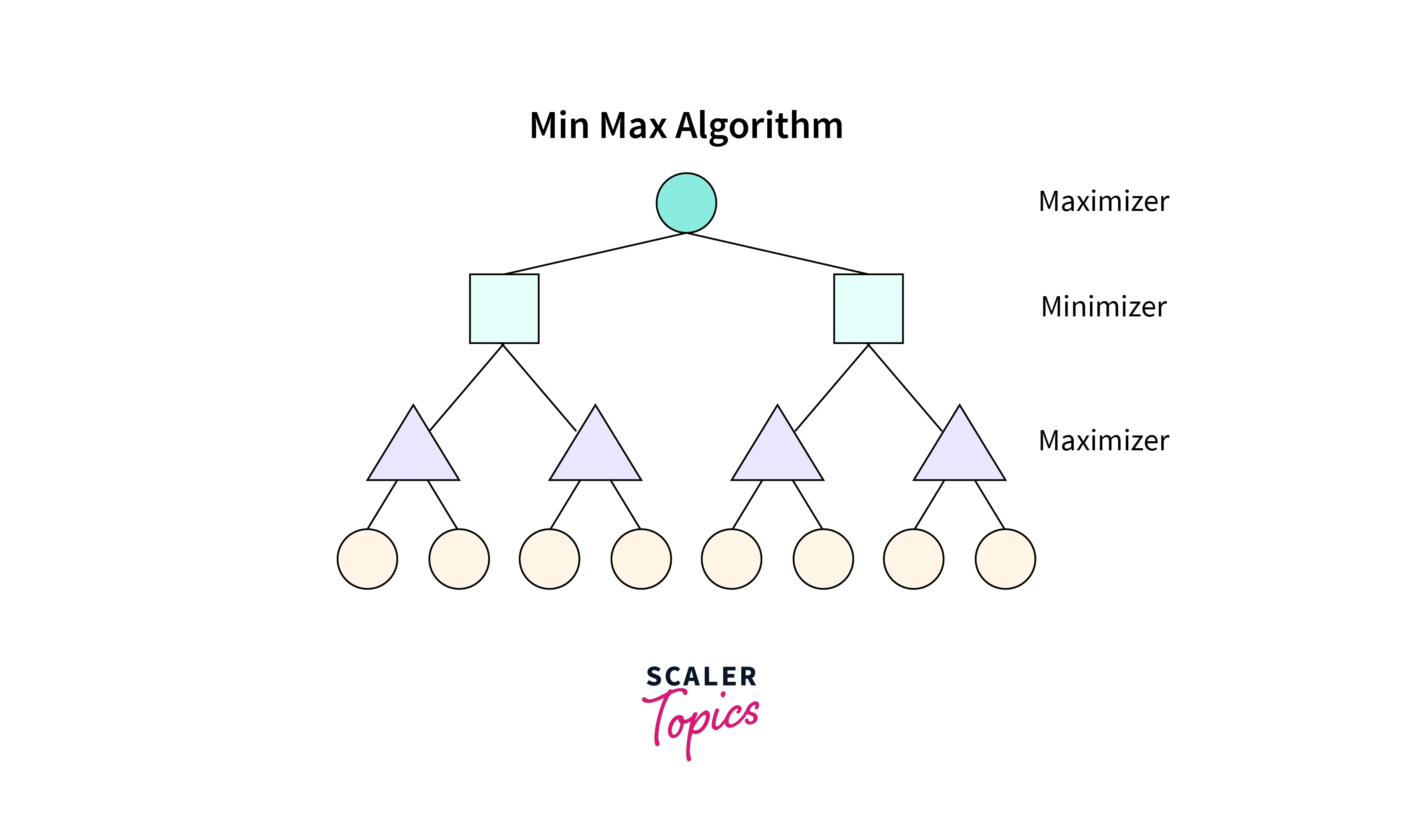
Game Theory
Game theory is the study of mathematical representations of rational decision-makers interacting smartly. The main objective of game theory is to understand the decision-making process of different players in a game and the outcome of their decisions.
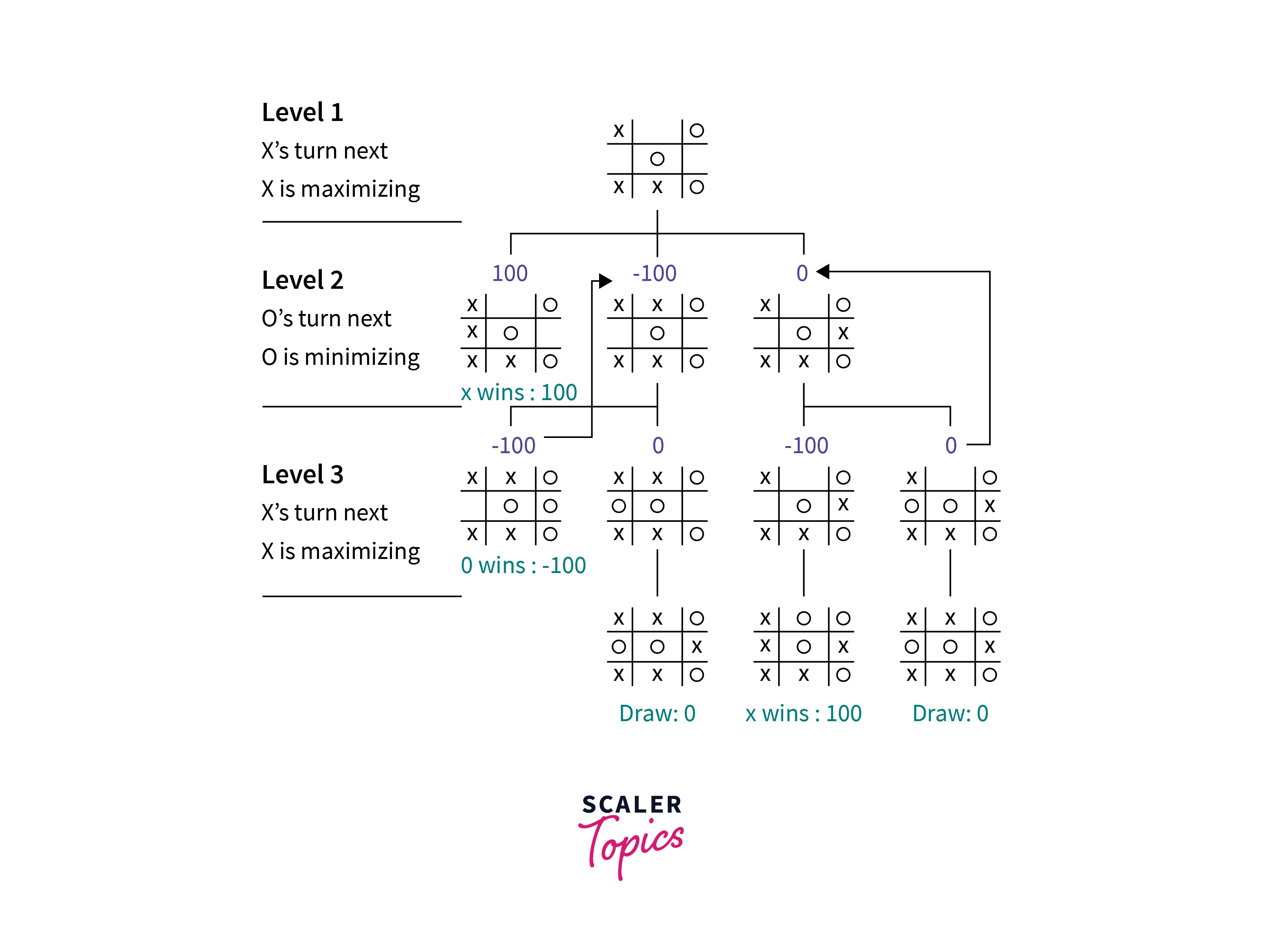
Each player is aware of the other players' strategies, outcomes, and actions in games with complete information. Games with incomplete information, on the other hand, have unknown payoffs or hidden information. A game can be represented by a structure resembling a tree in game theory, known as a game tree. The edges of the tree reflect a player's potential moves, and each node represents a state of the game. The game's starting point forms the root of the game tree, while the terminal nodes reflect the game's conclusion.
Pseudo-code for MinMax Algorithm
The Min Max algorithm is a recursive algorithm that evaluates the optimal move for a player by assuming that the other player is making the best possible move. The algorithm is based on the principle of minimizing the maximum possible loss. The following is the pseudo-code for the MinMax algorithm:
In this pseudo-code, the node parameter represents the current state of the game, the depth parameter represents the maximum depth of the game tree to be searched, and the maximizingPlayer parameter is a Boolean value that indicates whether the current player is the maximizing player or not.
Working of Min-Max Algorithm
The Min Max algorithm recursively evaluates all possible moves the current player and the opponent player can make. It starts at the root of the game tree and applies the MinMax algorithm to each child node. At each level of the tree, the algorithm alternates between maximizing and minimizing the node's value. The player who will be winning the game is the maximizing player, whereas the player who will be losing the game is the minimizing player. The maximizing player chooses the child node with the highest value, while the minimizing player chooses the child node with the lowest value. This move is considered the optimal move for the player. The algorithm evaluates the child nodes until it reaches a terminal node or a predefined depth. When it reaches a terminal node, the algorithm returns the heuristic value of the node. The heuristic value is a score that represents the value of the game's current state.
Properties of Mini-Max Algorithm
The Min-Max algorithm has several properties, as discussed below:
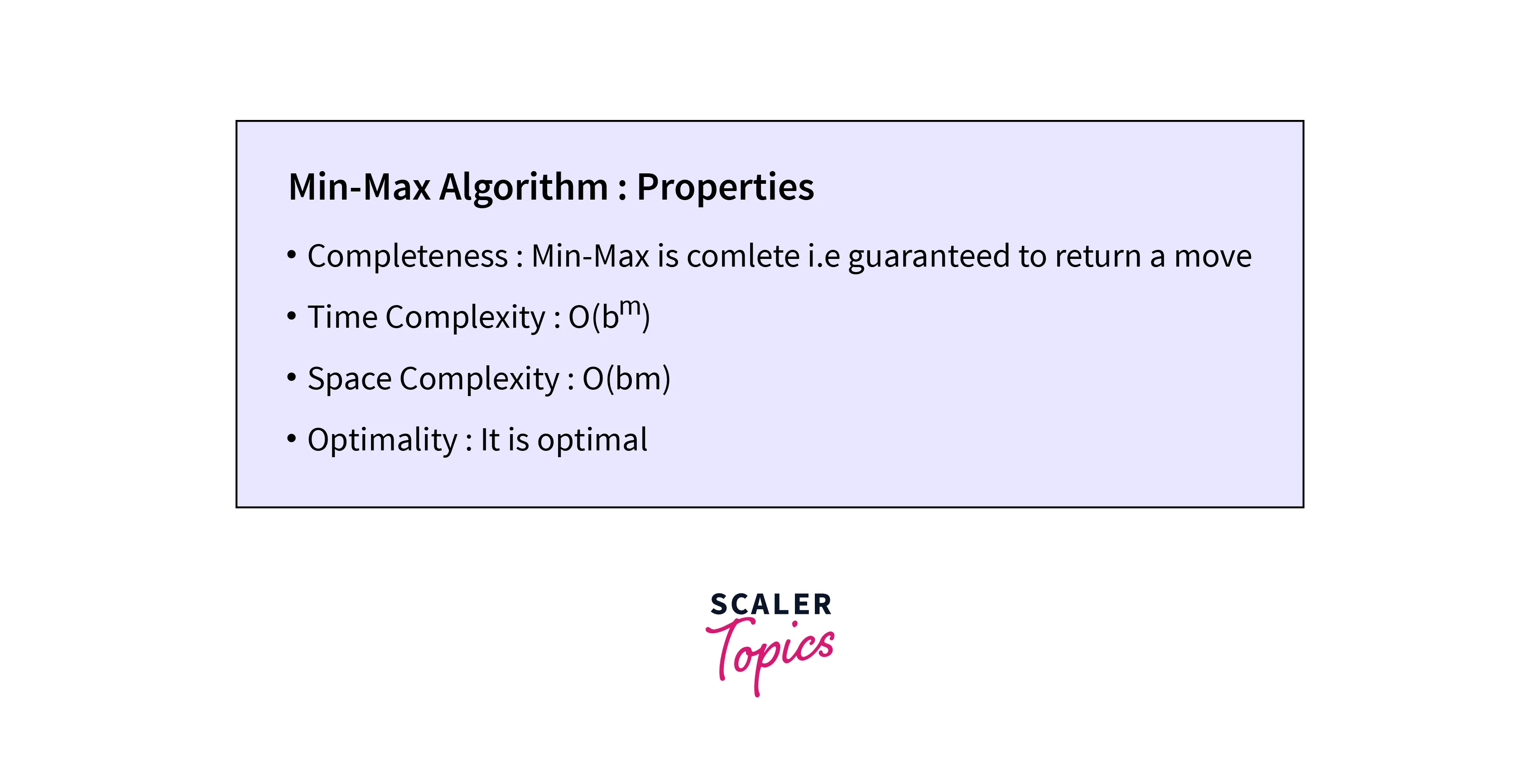
Complete
Since it is a complete algorithm, the MinMax algorithm can determine the best move for both players in any two-player zero-sum game. A game with a zero-sum outcome is one in which the sum of winnings and losses for a player is always equal to zero. That is, if one player wins, the other player must lose.
Optimal
The MinMax algorithm always finds the optimal move for a player, assuming that the other player is also making optimal moves. This means that if the opponent also uses the MinMax algorithm, the game will always end in a draw. The MinMax algorithm will attempt to reduce the maximum possible loss if the adversary is not employing the algorithm.
Time Complexity
The time complexity of the Min Max algorithm depends on the size of the game tree and the maximum depth to be searched. The time complexity of minimax is , where b is the number of legal moves at each point and m is the maximum depth of the tree. However, in practice, the algorithm can be optimized by using alpha-beta pruning and other techniques to reduce the search space and improve the time complexity.
Space Complexity
The space complexity of the MinMax algorithm depends on the size of the game tree and the maximum depth to be searched. The algorithm needs to store the game's state and the node's heuristic values in memory. The space complexity is , where b is the number of legal moves at each point and m is the maximum depth of the tree.
Applications of the MinMax Algorithm
The Min Max algorithm has numerous applications in the fields of artificial intelligence, game theory, etc. Let us discuss some of the most common applications of the algorithm:
Game AI
Game AI uses the MiniMax algorithm quite frequently. Game designers use the algorithm to build AI opponents that are capable of playing poker, tic-tac-toe, and chess at a high level. Even in complex games with enormous search spaces, the AI can make the best decisions by using the MinMax algorithm.
Decision-Making
The MinMax algorithm can also be utilized in decision-making processes, such as financial planning and resource allocation. Decision-makers can make better choices and limit losses by using this algorithm.
Auctions
The MinMax algorithm can be used in auctions to determine the optimal bid for a bidder. The algorithm can help a bidder make an informed decision and minimize their losses by evaluating the other bidders' potential moves and their maximum possible gain.
Negotiations
The Min Max algorithm can also be used to decide on a negotiator's best course of action. By analyzing the various moves of the opposite side and their maximum gain, the algorithm can assist a negotiator in making an informed choice and maximizing their gains.
Variations of the MinMax Algorithm
Several variations of the Min Max algorithm have been developed to address its limitations and improve its performance. The following are some of the most common variations of the algorithm:
Alpha-Beta Pruning
Alpha-beta pruning is a method for reducing the search space of the MinMax algorithm by removing branches of the game tree that do not need to be investigated. The algorithm performs better by evaluating more nodes within the same time frame using alpha-beta pruning.
Monte Carlo Tree Search
The Monte Carlo tree search variant of the MinMax algorithm explores the game tree using random sampling. The method can efficiently determine the best move by randomly choosing moves and simulating the game's result by exploring more nodes in less time.
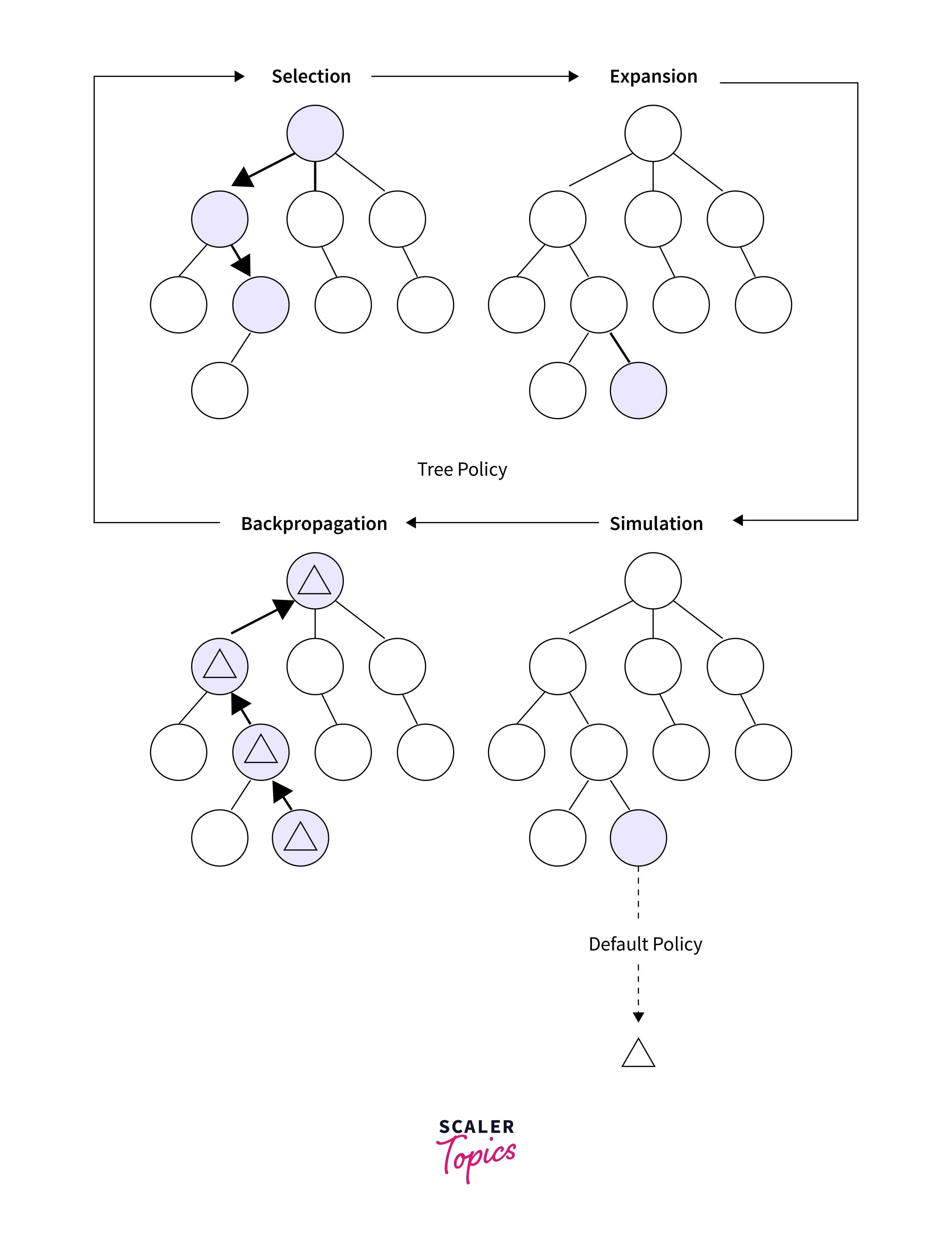
Negamax
The Negamax method is a modification of the MinMax algorithm that streamlines its implementation by evaluating the individual players' moves using a single function. The MinMax algorithm can be executed more quickly with fewer lines of code by utilizing negamax.
MinMax with Iterative Deepening
The MinMax algorithm can be combined with iterative deepening to create the MinMax with an iterative deepening variant. The technique can probe further down the game tree via iterative deepening without needing more memory.
Overall, these variations of the MinMax algorithm have been developed to improve its performance and address its limitations.
Comparison of the MinMax Algorithm with other AI Algorithms
The Min Max algorithm is just one of many AI algorithms used in gaming and other applications. Several Ai techniques have been created and used to address related issues. The MinMax algorithm is contrasted with a few of these methods as follows:
AlphaGo
AlphaGo is an AI algorithm developed by Google DeepMind. This algorithm uses deep neural networks and Monte Carlo tree search to play games like Go and Chess. While AlphaGo explores the game tree similarly to the MinMax algorithm, it uses a more complex evaluation function and Monte Carlo tree search to explore the game tree.
Q-learning
Q-learning is a reinforcement learning algorithm that uses trial and error to teach itself the value function of an ideal policy. Several fields, such as robotics and game AI, employ Q-learning. In contrast to the MinMax technique, Q-learning can handle unpredictable settings and does not necessitate a full game model.
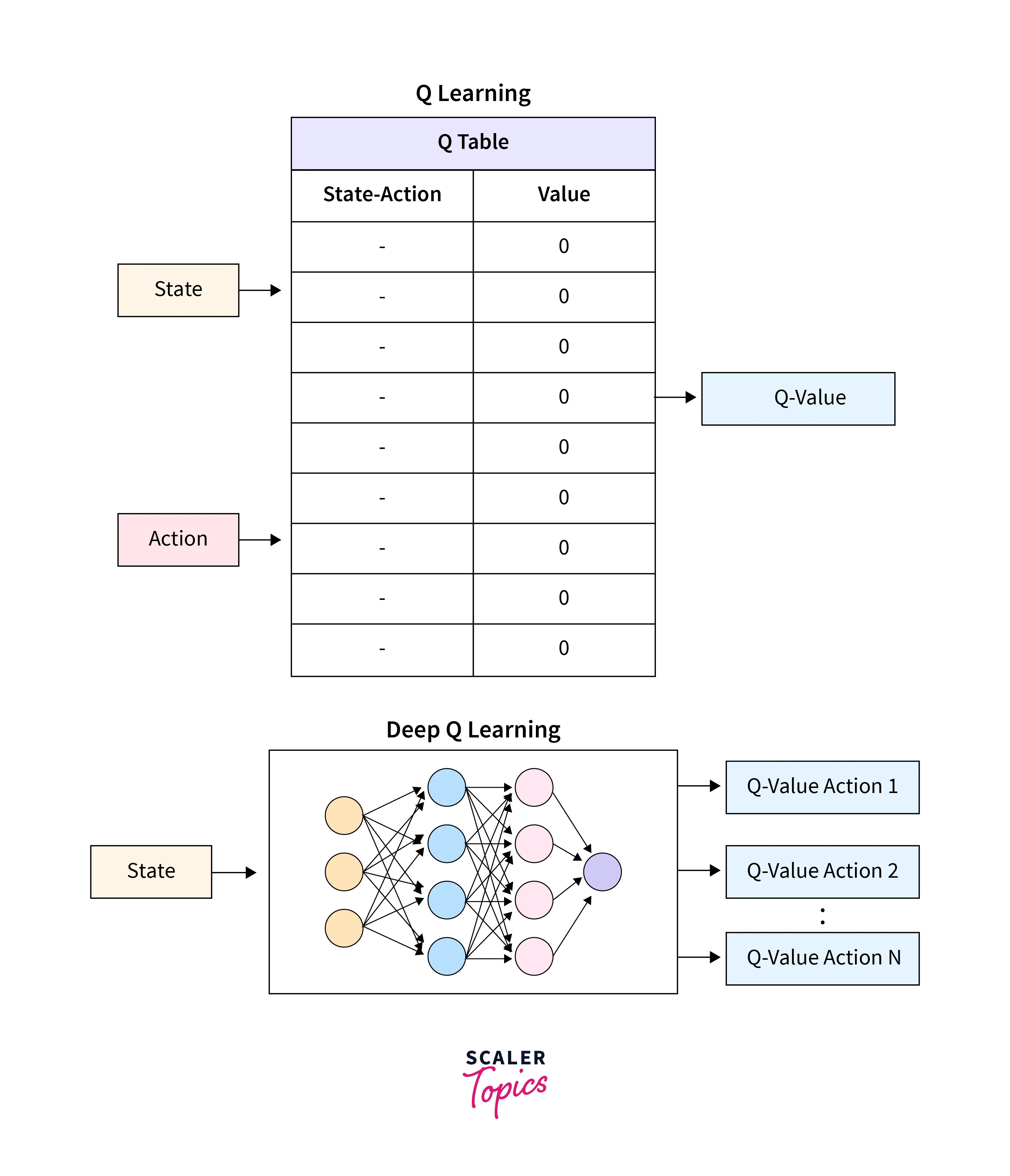
Monte Carlo Tree Search
Monte Carlo Tree Search (MCTS) is a search algorithm used to play games like Go and chess. MCTS assesses the value of each node in the game tree by using random simulations, and the node with the highest value is selected. While MCTS explores the game tree similarly to the MinMax algorithm, it uses random simulations instead of an evaluation function.
Decision Trees
Decision trees are a machine learning algorithm that employs a tree-like architecture to represent decisions and potential outcomes. Many different applications, such as fraud detection and medical diagnosis, use decision trees. Decision trees differ from the MinMax method because they presume a static environment and do not consider the opponent's moves.
Limitation of the minimax Algorithm
The following are some of the drawbacks of the Min-Max algorithm:
- It presumes that the adversary likewise makes the best movements, which may not be the case in actual play. Players might make blunders or employ suboptimal tactics in real-world games. The MinMax algorithm may take a longer time to determine the player's best move in such circumstances.
- The games with a wide search space should not use the MinMax algorithm. Evaluating every move in such games could take a while, and the memory needs might become excessively large.
- The MinMax algorithm does not consider the probability of certain events occurring. The outcome of some games, like poker, is determined by the likelihood that specific things will happen, such as the allocation of cards. The MinMax algorithm might not be appropriate in these games.
Future Developments of the MinMax Algorithm
The Min Max algorithm has been a cornerstone of game theory and artificial intelligence for many years. However, there are still several areas where the algorithm could be improved. The following are some of the potential MinMax algorithms advances for the future:
Multi-Player Games
The MinMax algorithm was initially created for two-player games. Yet, several games, like bridge, poker, and go, have more than two participants. The MinMax algorithm is being extended to multi-player games by researchers, who may employ game-theoretic models like the Shapley value.
Deep Reinforcement Learning
For representing the value function in the MinMax method, deep reinforcement learning, a version of reinforcement learning, uses deep neural networks. The system can learn more complicated strategies and play games at a more significant position by utilizing deep reinforcement learning.
Uncertainty
The Min Max algorithm assumes that both players know the game's rules and can weigh all potential plays. However, the opponent's actions or the game's condition are unpredictable in many real-world situations. Researchers are exploring ways to extend the MinMax algorithm to handle uncertainty, such as by using Bayesian models or Monte Carlo simulations.
These MinMax algorithm improvements can potentially broaden the method's applications and enhance its functionality. The MinMax algorithm is anticipated to continue to be a key component of strategic planning and decision-making as game theory and artificial intelligence develop.
Conclusion
- Min Max algorithm determines the best move for a player in a two-person zero-sum game.
- It is a complete and optimal algorithm that can determine the player's best move if the opponent also makes the best moves.
- Its assumptions about the opponent's play and its unsuitability for games with a wide search space are only a few of its drawbacks.
- Despite these drawbacks, the MinMax algorithm is nevertheless a key idea in game theory and has many uses in studying artificial intelligence.
